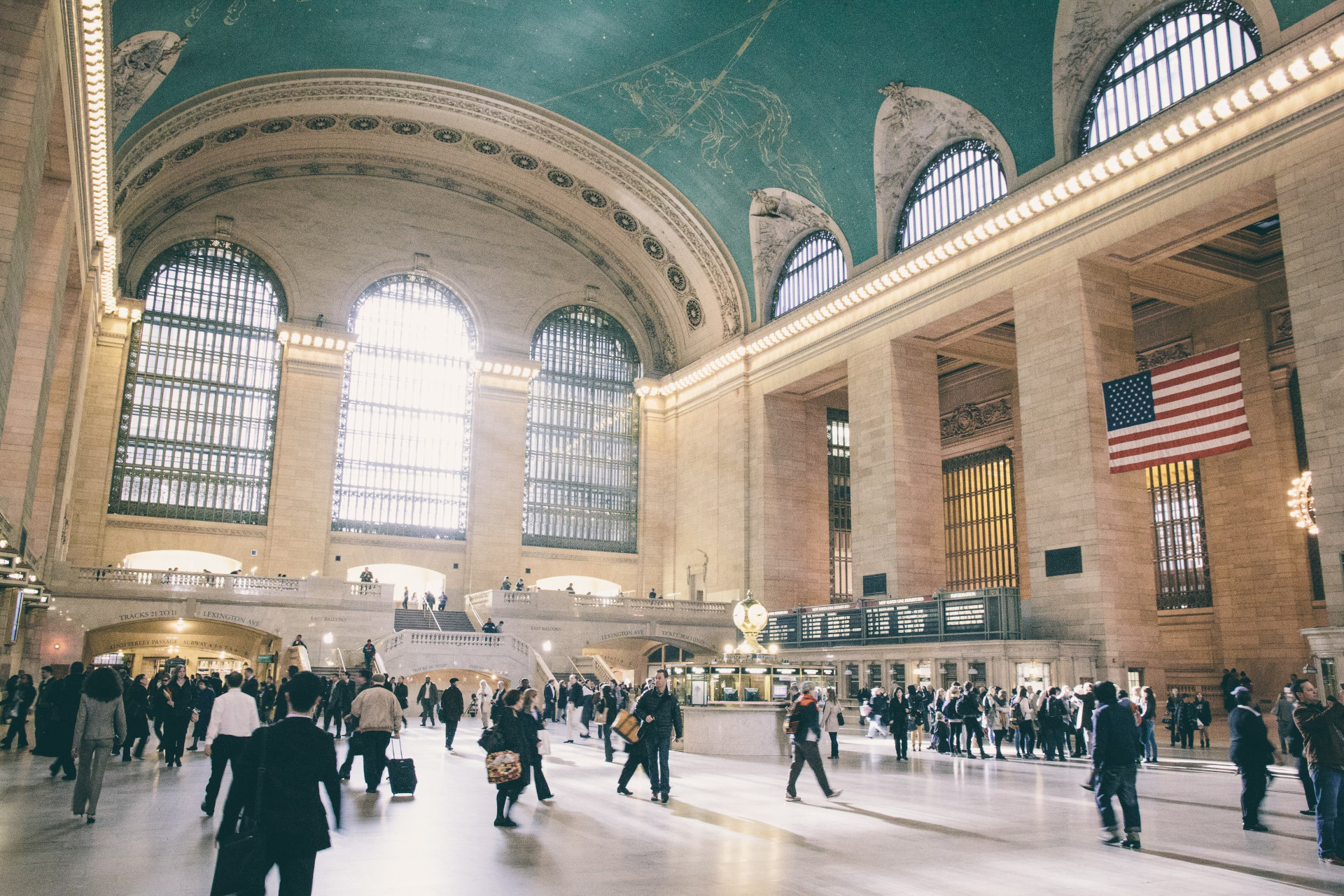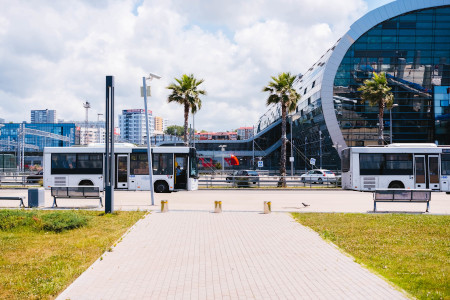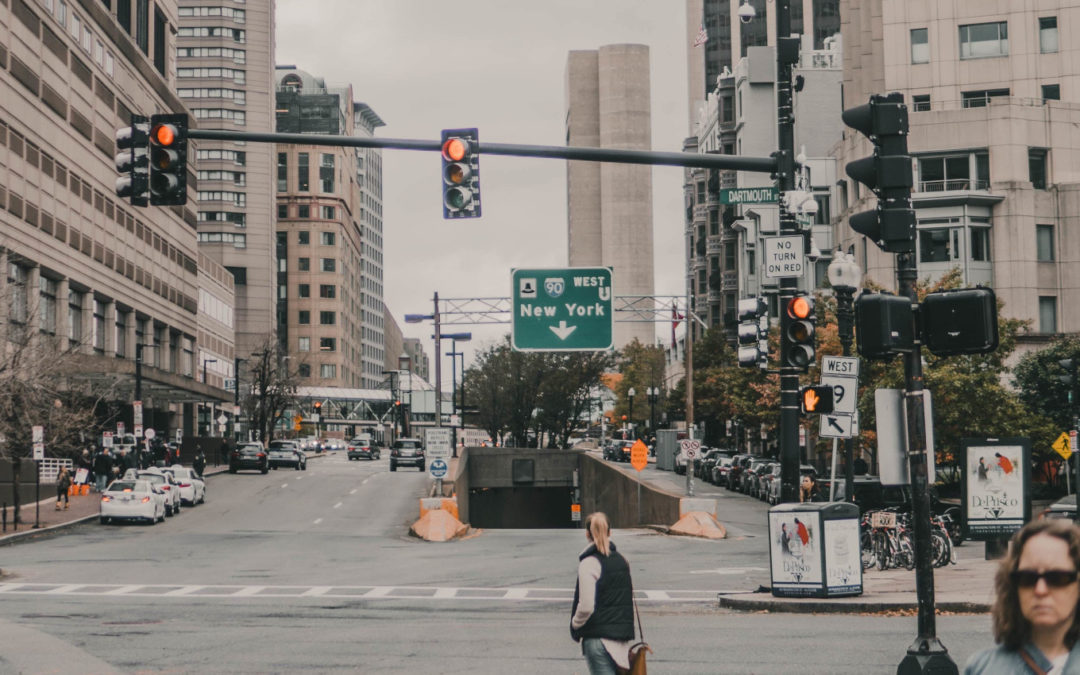
How Can Multimodal Transit Centers Be Accessible for People with Disabilities?
Multimodal transit centers turn out to be major nodes of transportation in large cities that aim at improving transport efficiency. They can easily connect together different means of transportation, thus saving time for passengers who need to commute. Every day, transit centers enable millions of passengers to easily reach their destination regrouping several transport networks like buses or trains under one place. But how can such crowded and complex places be accessible to people with disabilities?
Getting around spontaneously in a city implies being autonomous, an even more important notion for people with disabilities. However, mobility remains one of the most challenging issues for them. A lot of factors need to be considered for accessibility barriers to be removed. But it doesn’t mean it’s not impossible, even in a maze-like transport hub with connections to railroad and subway trains or city bus services.
Let’s take a look at innovative solutions that help users with disabilities safely get their bearings in multimodal transit centers!
What are multimodal transit centers exactly?
Multimodal transit centers or transport hubs gather different means of transportation: railroad stations, subway stations, rapid transit stations, city buses, regional buses… Some have a high number of platforms located on ground level or deep underneath like New York Grand Central Terminal and its 44 platforms. Thus transport hubs accumulate a lot of possible combinations. Even airports can be considered as transport hubs since some include international railroad trains and public transit systems such as buses, shuttles and streetcars to connect them to the city on top of national and international airlines.
The common goal is to provide multimodal and interchange transportation. Instead of having a point-to-point system, passengers who need to commute benefit from a hub-and-spoke system: they have at their disposal different possible combinations in one place to make their trips more simple. Thus they can easily reach their destination without spending unnecessary time going for example from a subway station in the city centre to a bus stop across. In a world that keeps moving faster and faster, a hub-and-spoke network represents the perfect solution for commuters in large cities. With so many options available, they can use the means of transportation that best suits their journey and their needs.
Penn Station in New York City is a perfect example of a multimodal transit center: it regroups intercity rail with Amtrak, commuter rail with Long Island Rail Road (LIRR) and NJ Transit (NJT), rapid transit with New York City Subway MTA and PATH, and bus and coach services with New York City Bus and Intercity coaches. Penn Station results in being one of the busiest transportation hubs in the Western Hemisphere! As such, it sets an example of accessibility by providing accessible restrooms, high platforms, accessible parking…
What’s noteworthy with transit centers is that they’re not just about transportation. Thanks to shops, bars and restaurants, users can fully take advantage of these hubs. In a way, they provide similar services as shopping malls. For example, New York Grand Central Terminal has 60 shops and 35 places to eat. It can even welcome different types of events in the Vanderbilt Hall and contains libraries. This interchange service aims at offering the best possible experience to all.
For more information on transit hubs, you can read Arcadis’ report on mixed mobility: Improving Quality of Life Through Transit Hubs. The design and consultancy firm provides a benchmark with valuable insight on different transit centers across the world.
Even though there’s a constant flow of traffic passengers, transit centers’ infrastructures are designed to make passengers’ journey easier and pleasant. Indeed, architects and urban planners apply the principles of universal design for the comfort of all such as perceptible information, low physical effort and simple intuitive use.
Obviously, passengers with disabilities fully benefit from these principles. They can use any means of transportation that multimodal transit centers dispose of thanks to easy accessible solutions.
How to remove accessibility barriers in transit centers?
As you can see, there are so many transportation combinations that it’s easy for anyone to feel overwhelmed. For people with disabilities, this may cause a lot of stress and anxiety. How can they easily find their bearings in a loud and busy transport hub?
First things first: using public transit means having a seamless mobility chain to go from point A to point C. This means that point B needs to perfectly link together point A and point C. The mobility chain actually concerns any passengers, not just those with disabilities. Our article How to Guarantee a Seamless Mobility Chain to Users with Disabilities? will shed some light on this key notion.
Obviously, removing accessibility barriers is what provides a seamless mobility chain. It implies being aware of the difficulties met by people with disabilities. This can happen at any stage of their journey. Let’s review the obstacles met by people with disabilities during each stage of their trips and the solutions that network operators can implement to help them get around!
Preparing your trip
Having a smooth trip strongly depends on this first stage. People with disabilities need to make sure they know everything about the route to take according to their needs, traffic…
| Obstacles | Solutions |
| Not knowing the best route to take according to their needs | Using a journey planner online or via an app that calculates journeys including transfers |
| Lack of information on traffic | Audio and visual real-time information |
| Lack of information about elevators and escalators | Real-time information about the location of elevators and escalators and their working order |
The MaaS (Mobility as a Service) is a great innovative solution that integrates different means of transportation and can help users plan a trip. Our article Maas: a Solution for Tomorrow’s Mobility deciphers this technology perfectly suited for smart cities.
Finding the entrance of the transit center
Transit centers being a hub-and-spoke system, they can have several entrances and exits. This also demands good preparation. But once people with disabilities are in their vicinity, they may need extra help to find the exact location of the entrance.
| Category of people with disabilities | Solutions |
| People with a visual impairment | Audio beacons like NAVIGUEO+ HIFI: they can be activated on demand thanks to a remote control or the smartphone app MyMoveo |
| An efficient signage system with tactile guide paths, visual contrast and detectable warning strips | |
| People with a mental disability | Using universal pictograms that are easy to understand |
Going inside the transport hub
The implementation of elevators and escalators is crucial for people with reduced mobility such as wheelchair users, the elderly, parents with strollers…
| Category of people with disabilities | Solutions |
| People with reduced mobility | Elevators and escalators |
| Access ramps | |
| Large automatic doors | |
| People with a visual impairment | Secured stairs: handrails and contrasting non-slip stairs |
Elevators and escalators need to be in enough numbers, perfectly located and visible to all of those who would like to use them. Plus, maintaining their working order is key to ensure a seamless mobility chain.
Buying a ticket
Even a trivial thing such as buying a ticket can be challenging for people with disabilities whether they use the ticket machine by themselves or they ask a staff member at a booth station. Nowadays, more and more people buy their ticket via their smartphone. Users can thus easily do it at home.
| Category of people with disabilities | Solutions |
| Wheelchair users | Lowered counter |
| People with a visual impairment | Embossed buttons or Braille on the ticket machine |
| Tactile guide paths and audio beacons to find the locations of the booth and the machine | |
| People with a hearing impairment | Audio induction loops at station booth |
| People with a mental impairment | Universal pictograms that are easy to understand |
| Accessible vocabulary (easy-to-read) |
One of the most important things when assisting people with disabilities is knowing how to behave around them. A trained staff is key to ensure passengers with disabilities have the best customer service possible. That’s how transit centers can retain customers.
Going through the turnstiles
This stage can be stressing since passengers with disabilities may lack time to cross the turnstiles. Sometimes, the closing mechanism is just too fast. Plus, other passengers behind them may be impatient.
| Obstacles | Solutions |
| Not enough width for wheelchair users | Dedicated airlock for them |
| Ticket validity control too high for wheelchair users | Lowered validity ticket control |
| Difficulties to insert a ticket | Contactless validation |
| No clear distinction between entry and exit gates | Visual contrast, universal pictograms and tactile guide paths |
| Fast closing mechanism | Presence detector |
Finding the platform
Depending on the transit center, passengers with disabilities may need to use a bus, a train or a subway train. In such gigantic transport hubs, finding their bearings can be difficult for them since they contain so many different means of transportation and connections. Going through the different concourses can feel like quite the expedition.
A clear audio and visual signage system such as the one previously mentioned remains essential for passengers with disabilities.
But there’s also another solution that’s both simple and innovative: an indoor navigation app! The wayfinding app Evelity was developed by Okeenea Digital and especially created to guide people with disabilities step by step inside complex venues and public transit systems. That’s one of the reasons why the New York City subway chose Evelity for a test in real conditions! This solution is tailor made to fit any profile of disabilities and provides more autonomy and spontaneity to users with disabilities. In crowded and multimodal transit centers, this app is more than relevant!
Getting on the bus or train
For wheelchair users to get on a bus, bus drivers need to pull up to the curb or to lower or “kneel” the bus. Getting on a train means having an accessible boarding area at the centre of a platform with the smallest gap between the platform edge and the subway train. In New York City, MTA conceived a Guide to Accessible Transit on Buses and Subways that provides users with all the necessary information.
Accessible seatings aboard buses and trains enable wheelchair users to safely travel.
Getting off at the right station
The navigation app Evelity can of course alert users they’ve reached their destination. Even if their smartphone is in their pocket, the app still functions and gives them the necessary information. This enables vulnerable users to feel safe using their smartphone in a public space, without any risk of theft.
Visual and audio announcements allow passengers to constantly know where they are. Thus they have enough time to get ready to get off.
Although multimodal transit centers may seem at first complicated to use for people with disabilities due to so many combinations of transportation, there are a lot of solutions that are implemented to make their trips easier. Getting around spontaneously and autonomously is essential for all passengers, regardless of their profile. Accessible transport hubs help them save time while having the best experience possible.
For more information on accessible public transit systems, you can read the following articles:
How to Help People with Disabilities Get a Better Experience on the Subway?
MBTA: a Global Model of Accessible Public Transportation
Public Transport Information Accessibility: 5 Solutions for Deaf and Hard of Hearing Users
media

In a world that keeps moving faster and faster, a hub-and-spoke network represents the perfect solution (…) With so many options available, people can use the means of transportation that best suits their journey and their needs.
writer

Carole Martinez
Content Manager
stay updated
Get the latest news about accessibility and the Smart City.
other articles for you

Open Data Is Key to Fostering Universal Accessibility
Open data represents an opportunity for cities to reach universal accessibility. It shows the missing links of the mobility chain.
Our Audio Beacons Guide the Blind and Visually Impaired at the Helsinki Subway
The Helsinky subway improved their audio signage system by installing on demand and remotely activated audio beacons.
7 Good Reasons to Install Audio Beacons at Your Public Transport Network
Audio beacons are an efficient way to provide more autonomy to blind and visually impaired people. They can easily use public transport.

Will Remote Activation Become the Norm for Accessible Pedestrian Signals?
More and more cities like New York have been exploring remote activation to trigger accessible pedestrian signals.
share our article!
more articles

Disability Statistics in the US: Looking Beyond Figures for an Accessible and Inclusive Society
Disability Statistics in the US: Looking Beyond Figures for an Accessible and Inclusive Society Around 61 million adults in the United States live with a disability. Diving into disability statistics in the US will help us know exactly who is concerned and what...
Our Audio Beacons Guide the Blind and Visually Impaired at the Helsinki Subway
Our Audio Beacons Guide the Blind and Visually Impaired at the Helsinki SubwayOur audio beacons equip the new line of the Helsinki subway in Finland. They help blind and visually impaired people locate the points of interest of a station. For users with visual...

At What Intersections Should You Install Accessible Pedestrian Signals?
At What Intersections Should You Install Accessible Pedestrian Signals? When you install accessible pedestrian signals, you first need to ask yourself where exactly they are needed. Are there any intersections blind and visually impaired pedestrians particularly...

Hearing Impaired People: a Multitude of Profiles for Different Needs
Hearing Impaired People: a Multitude of Profiles for Different Needs Did you know that hearing impaired people have several profiles and that the way they identify themselves is important? You may be familiar with deaf and hard of hearing people but for each of...
NEVER miss the latest news about the Smart City.
Sign up now for our newsletter.
Unsubscribe in one click. The information collected is confidential and kept safe.
powered by okeenea
The French leading company
on the accessibility market.
For more than 25 years, we have been developing architectural access solutions for buildings and streets. Everyday, we rethink today’s cities to transform them in smart cities accessible to everyone.
By creating solutions ever more tailored to the needs of people with disabilities, we push the limits, constantly improve the urban life and make the cities more enjoyable for the growing majority.


